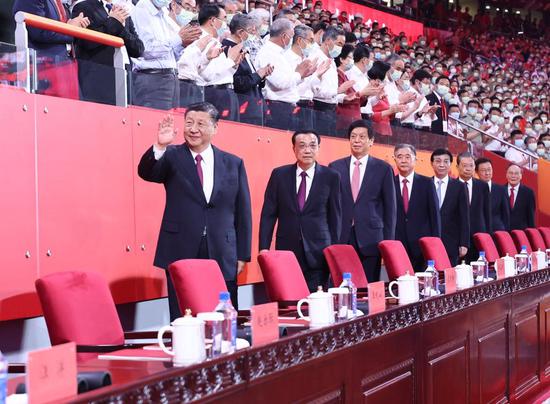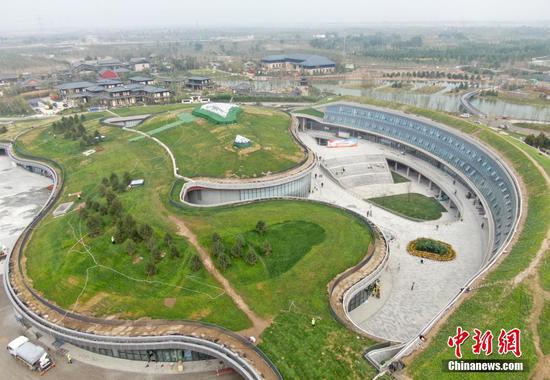China's urbanization rate has risen from less than 20 percent at the beginning of the reform and opening-up policies in the 1980s to reach 63.89 percent in 2020.
Regarding the narrowing gap relative to developed nations, industry experts said urbanization will remain an important driver of economic stability and long-term development.
The vitality of the nation's further urbanization is believed to come from top-tier cities' sustainable growth, the development of West China, the rise of Central China and the revitalization of Northeast China.
China will remain in the fast lane of urbanization in the coming decade, said Li Ling, president of CBRE China, a proper agency.
Judging by international experience, a nation officially enters the stage of stabilization once its urbanization rate rises to between 70 percent and 75 percent. In China's case, the nation's permanent urban population accounted for only about 45 percent of the total population, thus displaying great potential in terms of Chinese cities' permanent residential populations for further development, Li said.
China's urbanization rate reached nearly 64 percent in 2020, up from 49.7 percent in 2010, the seventh national census released by the National Bureau of Statistics showed.
China had a total population of 1.412 billion in 2020, with 901.99 million living in urban areas and 509.79 million staying in rural areas, according to the census.
The urbanization rate in the United States was 82.3 percent in 2018. If China were to reach the same rate, that would equate to an urban population of 1.162 billion, meaning an additional 259.90 million in urban areas, said James Macdonald, head and senior director of Savills China research.
Considering that there are about 60 countries or regions around the world whose urban populations account for over 80 percent of the overall population, according to World Bank data, the potential and space for further development of China's cities are still huge.
Looking ahead, any further development related to China's urbanization will be in accordance with China's future five-year plans. The 14th Five-Year Plan (2021-25) has set a target of 65 percent by 2025 regarding China's urbanization rate.
As urban areas continue to see their populations grow, partly owing to the increasing number of people drawn to cities and towns, this will bring further demand for infrastructure, real estate, goods and services in China's urban areas. And the continued reforms in the housing system will promote a steady and sound development of the real estate market, said Shaun Brodie, senior director and head of occupier research for China at Cushman& Wakefield.
In the meantime, policies issued by the central government in 2020 will lead to a healthier development of urban real estate markets around the country and in turn, be a stabilizing force for further urbanization.
"New urbanization has provided, and will provide more job opportunities in lower-tier cities and towns. Going forward, we expect new urbanization to be a key driver for real estate development in lower-tier cities and towns in China," Brodie said.
The central government's new urbanization strategy calls for a more people-orientated approach, more integrated rural and urban planning, and an action plan for urban renewal.
Therefore, urban networks such as transportation and communications will become better connected, while bigger labor markets and improvements in productivity and innovation will bring greater economic opportunities for core cities, in turn benefiting regional real estate markets.
Experts said the concept of new urbanization will also promote the transformation of urban development and construction from one of high-speed development to one of high-quality development, thereby helping to create a comprehensive citizen-friendly and sustainable urban living and working environment.
At the same time, opportunities will also be brought by China's promotion of the development of city clusters and strengthened resource coordination between large cities and small towns, as its 14th Five-Year Plan stated.
Yuan Xiaochao, head of research in East China with Colliers, suggested to shift the focus of urbanization from population quantity to quality in the future.
Regarding respective talent policies, cities are sparing no efforts in attracting high-level talent with favorable policies including offering permanent residential status, Yuan said.
As urbanization continues to expand, Zhu Lei, senior director and head of research and consultancy with Knight Frank, said the government is also working to realize a more balanced development of urban and rural areas.
"In a bid to narrow the gap between urban and rural development, the central government has launched the rural revitalization strategy in the past few years to beef up farmers' incomes," Zhu said.


















































